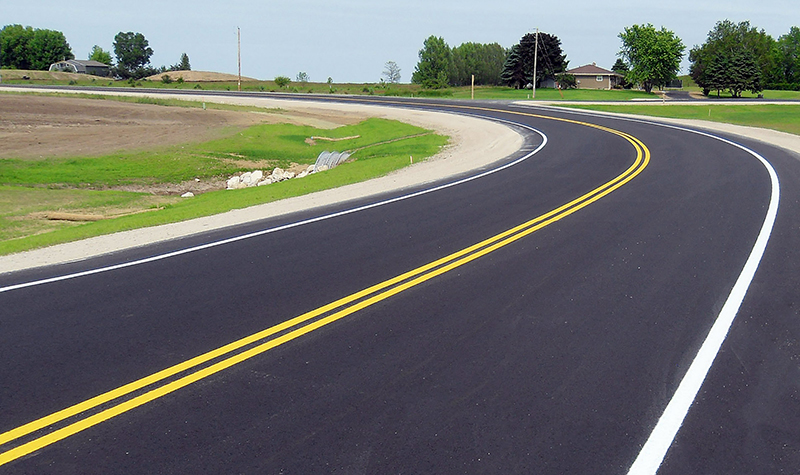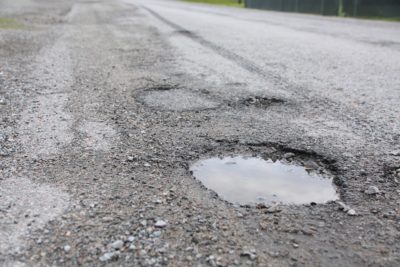Potholes: How They Form and How They Can Be Prevented
 Whether traveling on local streets, rural roads, or busy highways, nothing is more satisfying to a driver than a long stretch of smooth road. Conversely, nothing is more aggravating than a route peppered with potholes.
Whether traveling on local streets, rural roads, or busy highways, nothing is more satisfying to a driver than a long stretch of smooth road. Conversely, nothing is more aggravating than a route peppered with potholes.
Unfortunately, without proper road maintenance, the latter can become the norm rather than the exception ― and in addition to driver aggravation, can lead to overextended road maintenance budgets, vehicle damages and associated repair costs, traffic accidents, injuries, and even deaths.
How Potholes Form
Most public roadways in the United States are constructed using one or more layers of a base course followed by a layer of asphalt (commonly called blacktop). Roadway owners tend to choose this pavement option based on factors of affordable initial costs and the resulting smooth roadway surface it provides.
However, over time that smooth surface begins to deteriorate due to various factors, including the weight of ongoing traffic, as well as exposure to heat and radiation from the sun, cold, and water. Eventually, the deterioration results in cracks in the pavement, and water seeps through the cracks and under the road’s surface. Water becomes trapped under the asphalt layer and accumulates, causing the base course and soils underneath to become waterlogged.
 As vehicles continue to pass over the flexible asphalt surface, the heavy weight of the traffic compresses the cracked pavement and forces some of the water back out, and with it some of the material from under the roadway (the subgrade). Over time this emptying of subgrade material creates voids under the asphalt, which eventually collapses, creating potholes.
As vehicles continue to pass over the flexible asphalt surface, the heavy weight of the traffic compresses the cracked pavement and forces some of the water back out, and with it some of the material from under the roadway (the subgrade). Over time this emptying of subgrade material creates voids under the asphalt, which eventually collapses, creating potholes.
This pervasive pavement problem is exacerbated in areas where extreme winter temperatures cause water trapped below the roadway to freeze ― both directly under the pavement as well as within the base course and underlying soils. The water expands as it freezes, enlarging the voids under the roadway. These potholes-waiting-to-happen materialize predictably with the spring thaw, as the ice melts and the pavement gives way under the weight of traffic.
Five P’s: Pothole Prevention Through Pavement Preservation Practices
The scene is familiar: Orange cones block one or two lanes of a local roadway, and a road maintenance department vehicle inches along the designated stretch as work crews travel to and from the back of the truck, filling and patching pothole trouble spots.
This patching process, however, is more of a Band-Aid approach to addressing the problem of potholes. It doesn’t usually result in effectively sealing off former potholes from moisture, and the problem repeats itself. An alternative to this reactive maintenance approach is to back up a bit and prevent the proliferation of potholes in the first place. How? By implementing pavement preservation practices that protect roadways from the start.
According to the National Center for Pavement Preservation, pavement preservation is “a cost-effective set of practices that extend pavement life and improve safety and motorist satisfaction while saving public tax dollars.” Specific practices can range from routine maintenance tasks like surface cleaning and maintaining pavement markings to preventive maintenance and minor rehabilitation efforts like sealing cracks and applying surface treatments like chip seals, slurry seals, fog seals, and micro surfacing.
Ayres’ roadway design experts have worked with state transportation departments, municipalities, counties, and townships on new road projects as well as roadway reconstructions and reconfigurations ― including assisting with planning for proactive pavement preservation. Contact Ayres’ roadway design team to learn more about how they can help with your road construction and rehabilitation needs.
Looking for a Chance to Define Your Career Path?
Our St. Paul office is looking for a bright-minded leader to create and manage a Transportation Engineering/Design group! Take advantage of this unique opportunity to grow a team of professionals while writing your own story within Ayres.

Post a comment: